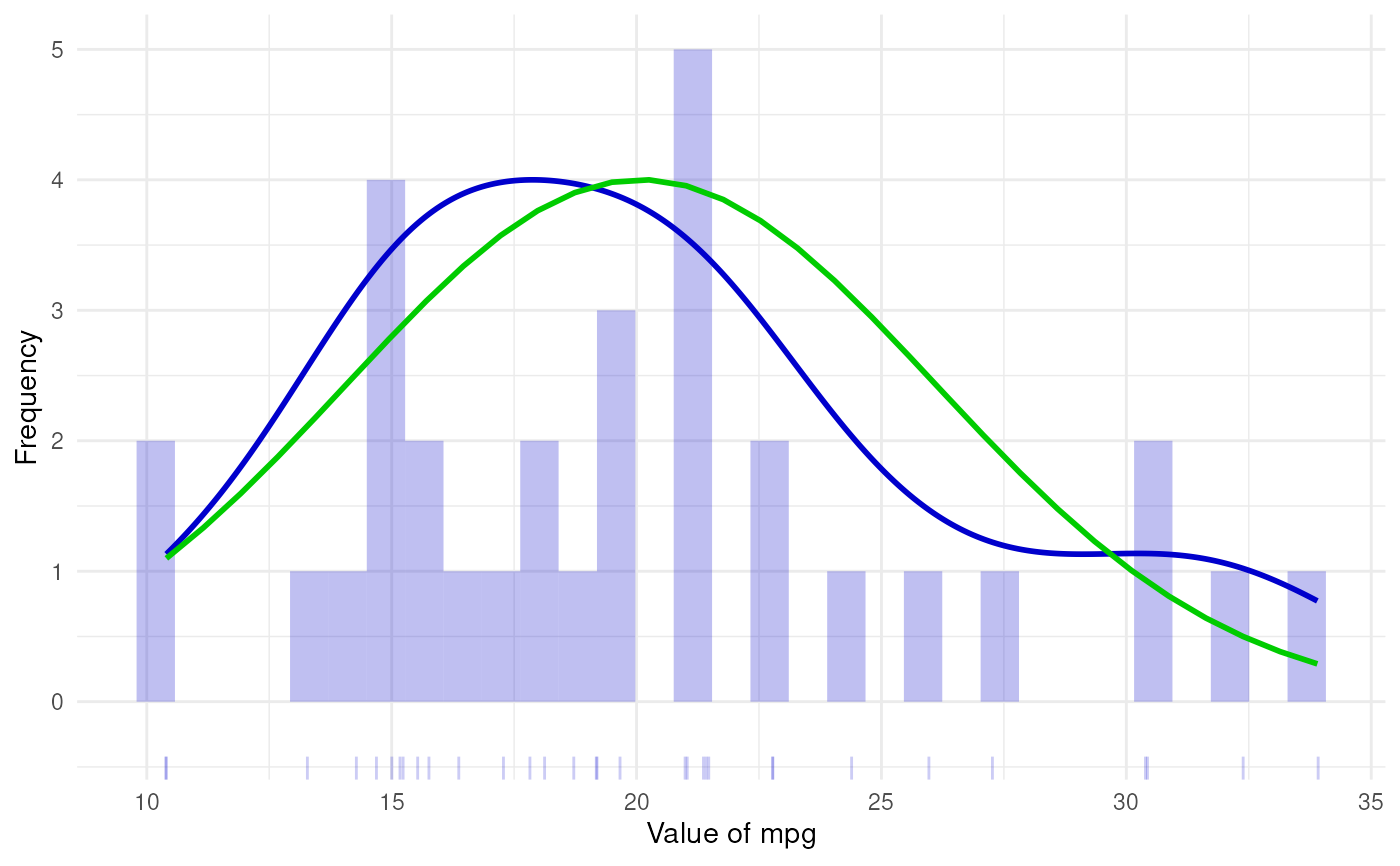normalHist generates a histogram with a density curve and a normal density curve.
normalHist(
vector,
histColor = "#0000CC",
distributionColor = "#0000CC",
normalColor = "#00CC00",
distributionLineSize = 1,
normalLineSize = 1,
histAlpha = 0.25,
xLabel = NULL,
yLabel = NULL,
normalCurve = TRUE,
distCurve = TRUE,
breaks = 30,
theme = ggplot2::theme_minimal(),
rug = NULL,
jitteredRug = TRUE,
rugSides = "b",
rugAlpha = 0.2,
returnPlotOnly = FALSE
)
# S3 method for normalHist
print(x, ...)Arguments
- vector
A numeric vector.
- histColor
The colour to use for the histogram.
- distributionColor
The colour to use for the density curve.
- normalColor
The colour to use for the normal curve.
- distributionLineSize
The line size to use for the distribution density curve.
- normalLineSize
The line size to use for the normal curve.
- histAlpha
Alpha value ('opaqueness', as in, versus transparency) of the histogram.
- xLabel
Label to use on x axis.
- yLabel
Label to use on y axis.
- normalCurve
Whether to display the normal curve.
- distCurve
Whether to display the curve showing the distribution of the observed data.
- breaks
The number of breaks to use (this is equal to the number of bins minus one, or in other words, to the number of bars minus one).
- theme
The theme to use.
- rug
Whether to add a rug (i.e. lines at the bottom that correspond to individual datapoints.
- jitteredRug
Whether to jitter the rug (useful for variables with several datapoints sharing the same value.
- rugSides
This is useful when the histogram will be rotated; for example, this can be set to 'r' if the histogram is rotated 270 degrees.
- rugAlpha
Alpha value to use for the rug. When there is a lot of overlap, this can help get an idea of the number of datapoints at 'popular' values.
- returnPlotOnly
Whether to return the usual
normalHistobject that also contains all settings and intermediate objects, or whether to only return theggplot2::ggplot()plot.- x
The object to print.
- ...
Any additional arguments are passed to the default
printmethod.
Value
An object, with the following elements:
- input
The input when the function was called.
- intermediate
The intermediate numbers and distributions.
- dat
The dataframe used to generate the plot.
- plot
The histogram.
Examples
normalHist(mtcars$mpg)
